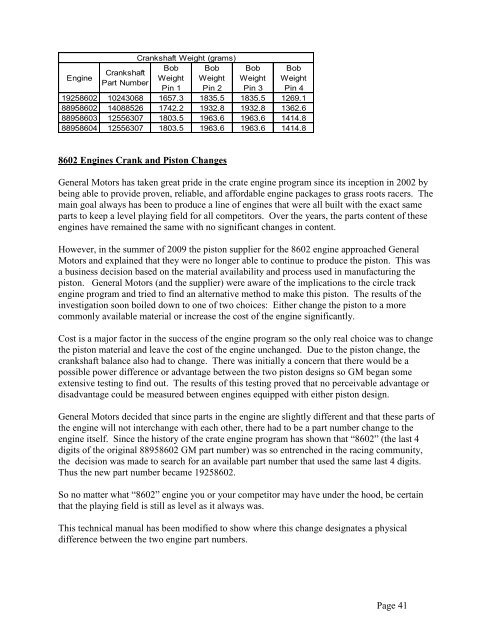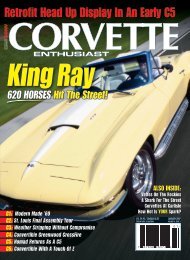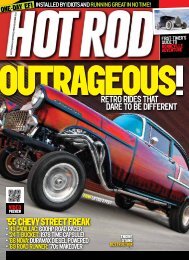Circle Track Crate Engine Technical Manual - Chevrolet Performance
Circle Track Crate Engine Technical Manual - Chevrolet Performance
Circle Track Crate Engine Technical Manual - Chevrolet Performance
You also want an ePaper? Increase the reach of your titles
YUMPU automatically turns print PDFs into web optimized ePapers that Google loves.
<strong>Engine</strong><br />
Crankshaft<br />
Part Number<br />
Crankshaft Weight (grams)<br />
Bob<br />
Weight<br />
Pin 1<br />
Bob<br />
Weight<br />
Pin 2<br />
Bob<br />
Weight<br />
Pin 3<br />
Bob<br />
Weight<br />
Pin 4<br />
19258602 10243068 1657.3 1835.5 1835.5 1269.1<br />
88958602 14088526 1742.2 1932.8 1932.8 1362.6<br />
88958603 12556307 1803.5 1963.6 1963.6 1414.8<br />
88958604 12556307 1803.5 1963.6 1963.6 1414.8<br />
8602 <strong>Engine</strong>s Crank and Piston Changes<br />
General Motors has taken great pride in the crate engine program since its inception in 2002 by<br />
being able to provide proven, reliable, and affordable engine packages to grass roots racers. The<br />
main goal always has been to produce a line of engines that were all built with the exact same<br />
parts to keep a level playing field for all competitors. Over the years, the parts content of these<br />
engines have remained the same with no significant changes in content.<br />
However, in the summer of 2009 the piston supplier for the 8602 engine approached General<br />
Motors and explained that they were no longer able to continue to produce the piston. This was<br />
a business decision based on the material availability and process used in manufacturing the<br />
piston. General Motors (and the supplier) were aware of the implications to the circle track<br />
engine program and tried to find an alternative method to make this piston. The results of the<br />
investigation soon boiled down to one of two choices: Either change the piston to a more<br />
commonly available material or increase the cost of the engine significantly.<br />
Cost is a major factor in the success of the engine program so the only real choice was to change<br />
the piston material and leave the cost of the engine unchanged. Due to the piston change, the<br />
crankshaft balance also had to change. There was initially a concern that there would be a<br />
possible power difference or advantage between the two piston designs so GM began some<br />
extensive testing to find out. The results of this testing proved that no perceivable advantage or<br />
disadvantage could be measured between engines equipped with either piston design.<br />
General Motors decided that since parts in the engine are slightly different and that these parts of<br />
the engine will not interchange with each other, there had to be a part number change to the<br />
engine itself. Since the history of the crate engine program has shown that “8602” (the last 4<br />
digits of the original 88958602 GM part number) was so entrenched in the racing community,<br />
the decision was made to search for an available part number that used the same last 4 digits.<br />
Thus the new part number became 19258602.<br />
So no matter what “8602” engine you or your competitor may have under the hood, be certain<br />
that the playing field is still as level as it always was.<br />
This technical manual has been modified to show where this change designates a physical<br />
difference between the two engine part numbers.<br />
Page 41




